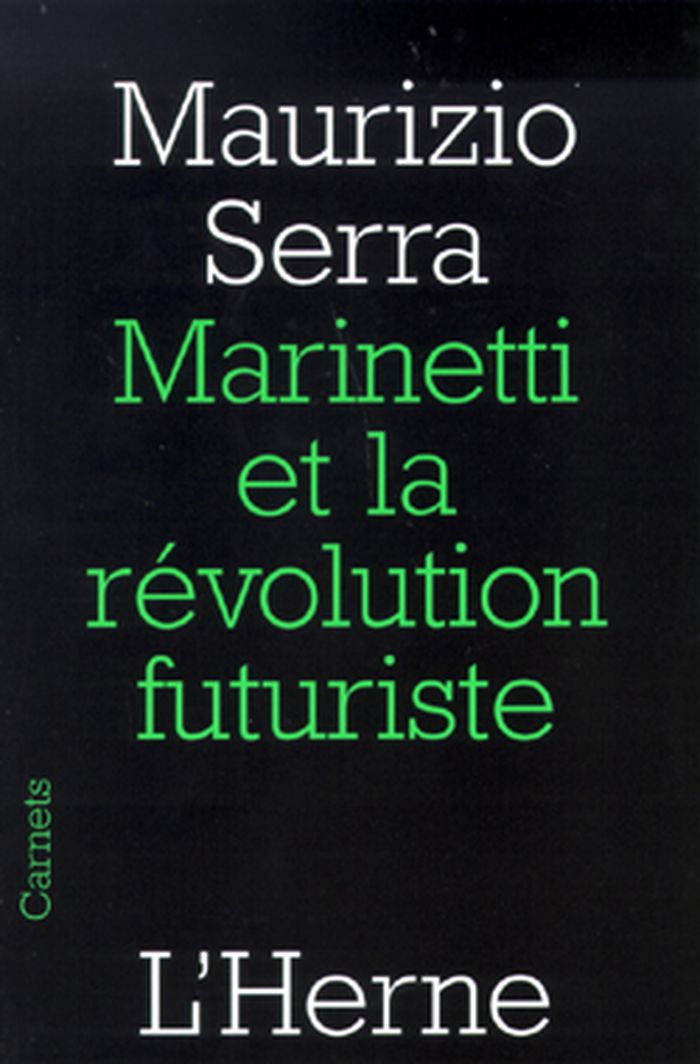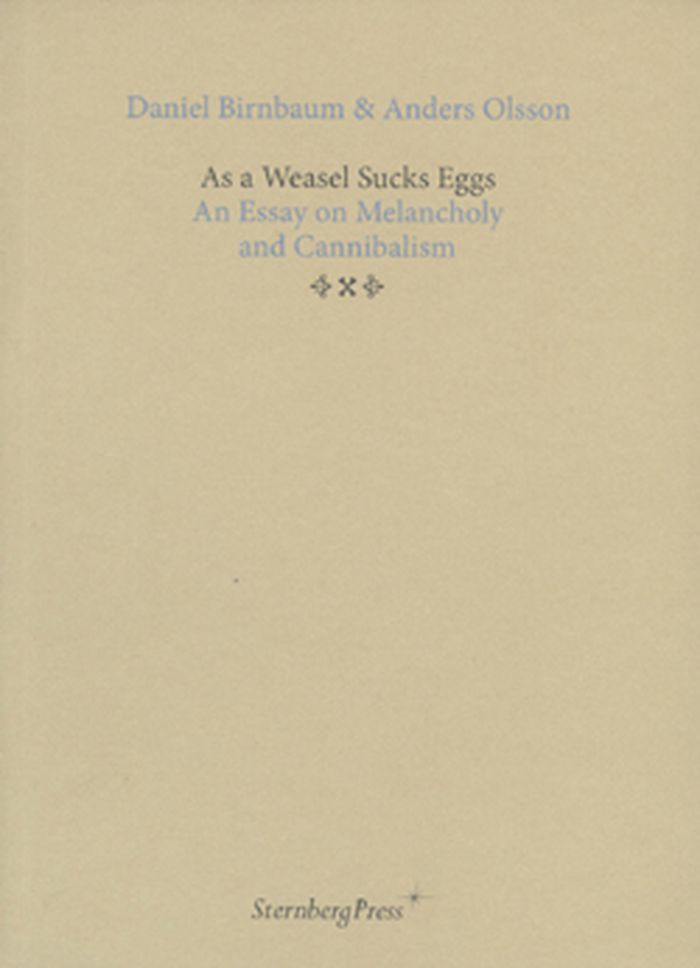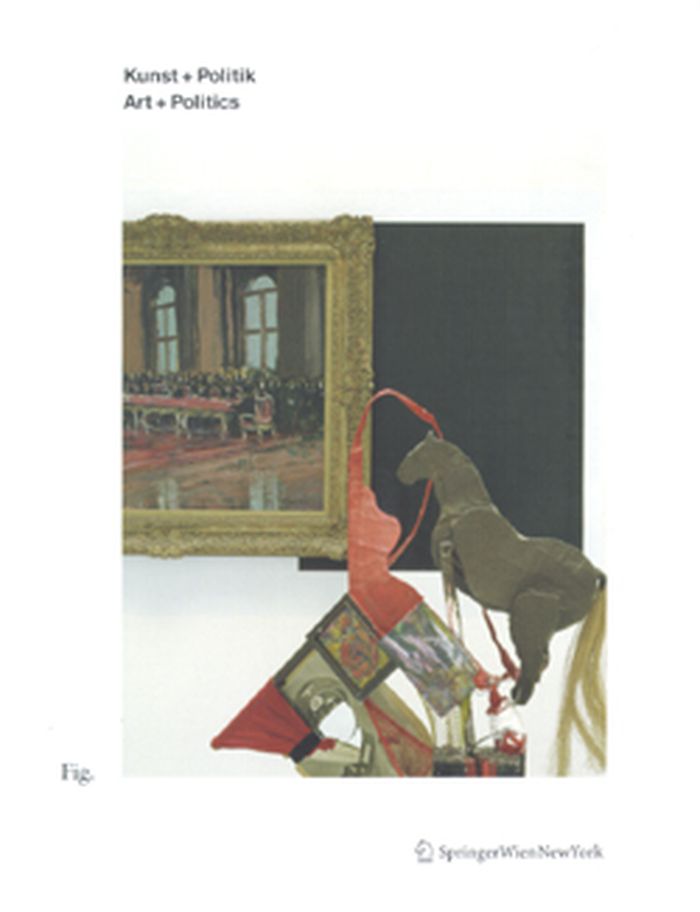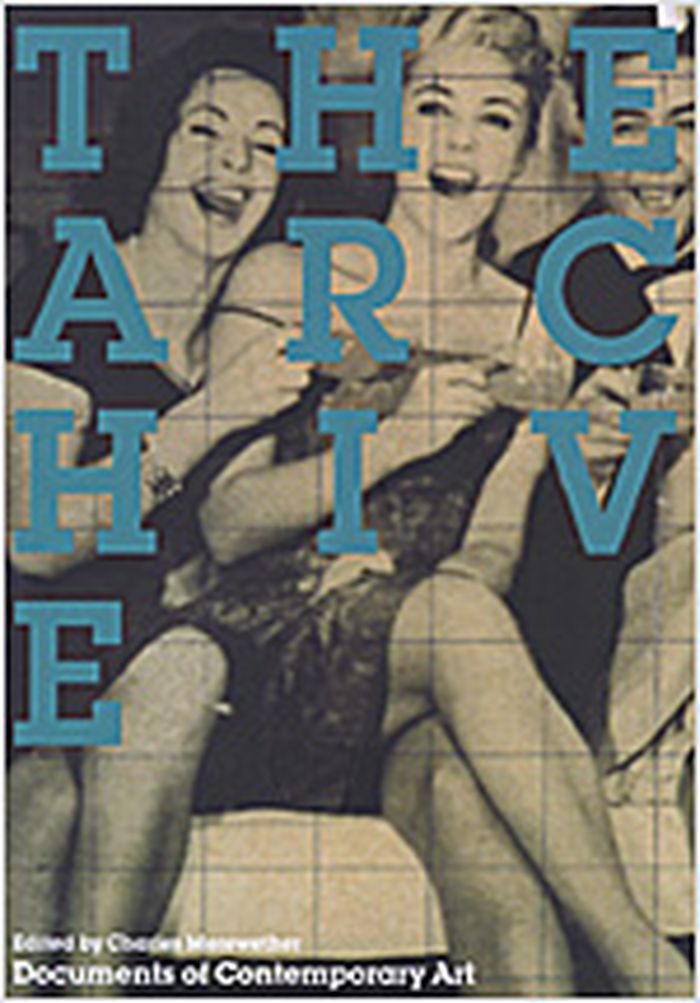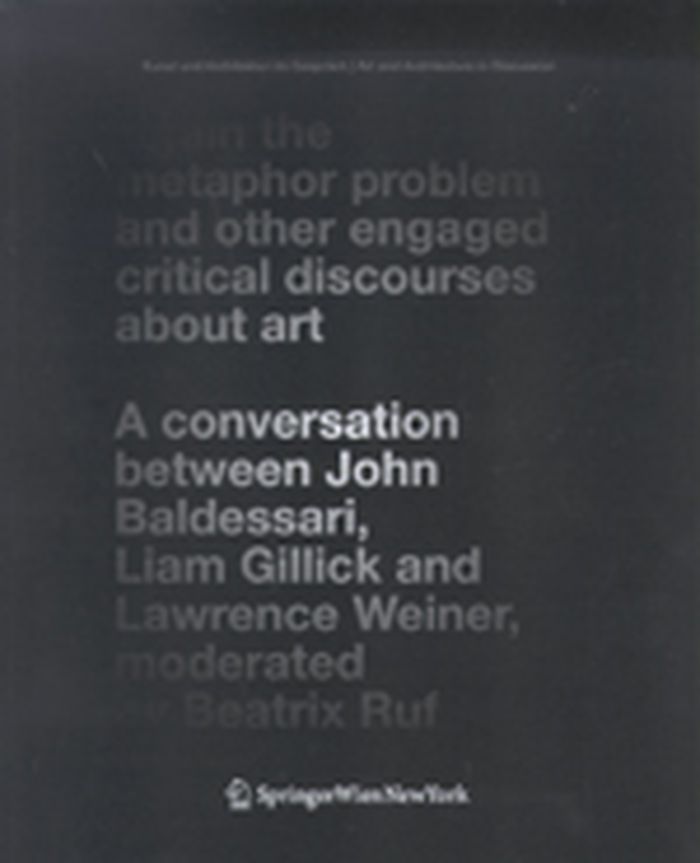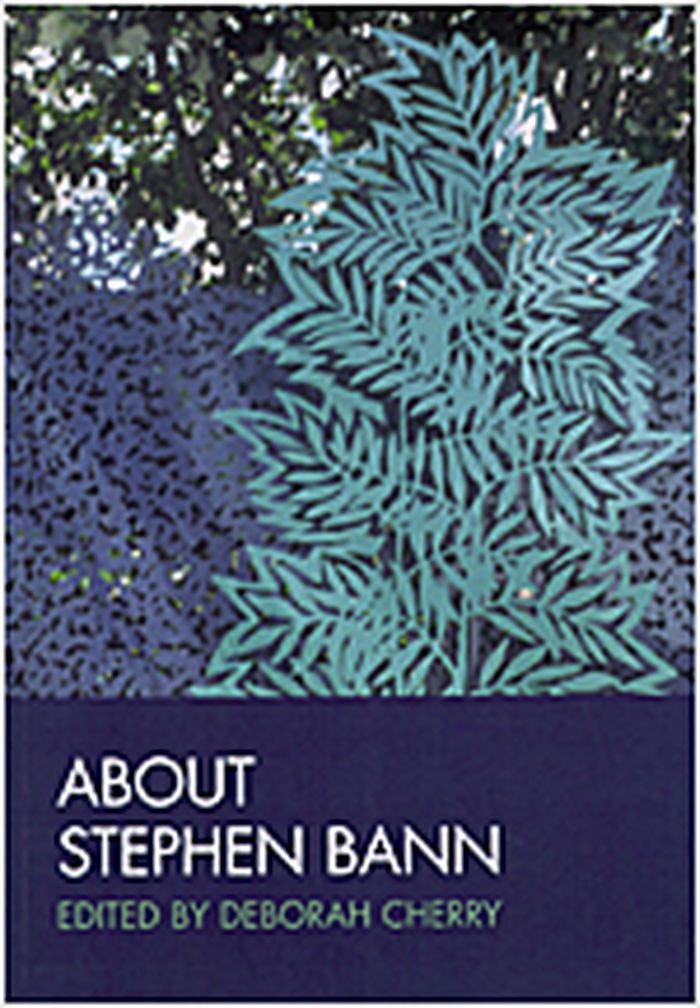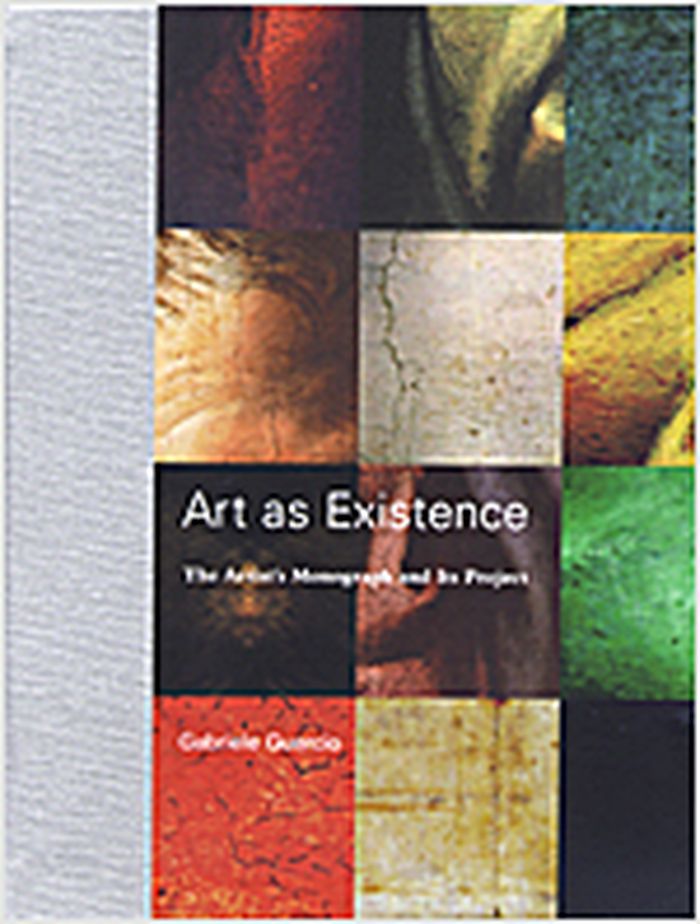$10.00
(disponible en magasin)
Résumé:
Commissionned by Black Diamond Press and International Project space, Birmingham (U.K.), to coincide with the exhibition 'Chris Evans Militant bourgeois : an existentialist retreat, 18 January to 17 Frebruary 2007, at IPS, Birmingham.
Théorie de l’art
octobre 2007, New York
Militant bourgeois : an existantialist retreat
Actions:
Prix:
$10.00
(disponible en magasin)
Résumé:
Commissionned by Black Diamond Press and International Project space, Birmingham (U.K.), to coincide with the exhibition 'Chris Evans Militant bourgeois : an existentialist retreat, 18 January to 17 Frebruary 2007, at IPS, Birmingham.
Théorie de l’art
$19.75
(disponible sur commande)
Résumé:
La guerre futuriste est une mobilisation totale contre les valeurs politiques, morales et culturelles du passé; elle permet à Marinetti de rompre les ponts avec la décadence, d'être de plain-pied dans la réalité qui n'est plus la conséquence du passé mais son contraire. Il repère un ennemi immédiat - les empires centraux "moribonds" - et un objectif facile -(...)
Marinetti et la révolution futuriste
Actions:
Prix:
$19.75
(disponible sur commande)
Résumé:
La guerre futuriste est une mobilisation totale contre les valeurs politiques, morales et culturelles du passé; elle permet à Marinetti de rompre les ponts avec la décadence, d'être de plain-pied dans la réalité qui n'est plus la conséquence du passé mais son contraire. Il repère un ennemi immédiat - les empires centraux "moribonds" - et un objectif facile - l'irrédentisme ; mais surtout il identifie, dans la technique au service du mythe, l'avènement traumatique de la modernité. [...] Marinetti n'est décidément pas facile à cerner. Il est de "droite" ou plutôt d'"extrême droite", lorsqu'il en appelle au droit du plus fort, au reniement de la solidarité de classe, à la loi martiale contre les pacifistes et les traîtres, à la destruction de l'ennemi et pas seulement à sa défaite. Il est de "gauche ", ou plutôt d'"extrême gauche" parce qu'à ses yeux la guerre doit mener à la dissolution de tout ordre préétabli, y compris celui des non-belligérants comme l'Eglise - d'où sa fronde pendant la période fasciste contre les compromis et la corruption du régime. Maurizio Serra, diplomate et historien italien, né à Londres en 1955 ; il dirige actuellement l'Institut diplomatique du ministère des Affaires étrangères italien. Spécialiste d'histoire des idées au XXe siècle, professeur de relations internationales à l'université LUISS de Rome, il est l'auteur de plusieurs ouvrages dont Le Passager du siècle.
Théorie de l’art
$28.95
(disponible sur commande)
Résumé:
Originally published in Swedish in 1992, this book examines the enigmatic relation of melancholia to an early kind of cannibalism, which psychoanalysis, in particular, stressed. It contains reading of, amongst others, Franz Kafka, Samuel Beckett, Thomas Bernhard, Sigmund Freud, G. W. F. Hegel, and the Swedish poet Gunnar Ekelöf. The authors also quote Goethe and Rabelais,(...)
Théorie de l’art
octobre 2008, Berlin, New York
As a weasel sucks eggs, an essay on melancholy and cannibalism
Actions:
Prix:
$28.95
(disponible sur commande)
Résumé:
Originally published in Swedish in 1992, this book examines the enigmatic relation of melancholia to an early kind of cannibalism, which psychoanalysis, in particular, stressed. It contains reading of, amongst others, Franz Kafka, Samuel Beckett, Thomas Bernhard, Sigmund Freud, G. W. F. Hegel, and the Swedish poet Gunnar Ekelöf. The authors also quote Goethe and Rabelais, for whom food is a cosmic principle, the soil of fertility, on which all creation is based. In a transferred sense, food also plays that same role for the melancholiac he who questions the normal order of things, who creates an other unknown food, with a variety of meanings. The authors trace the desire for this other food through the ages, and scrutinize its relationship to both primitive sacrificial rites as well as contemporary anthropology, philosophy, and linguistic theory.
Théorie de l’art
$42.00
(disponible en magasin)
Résumé:
Can art be used as an effective means for change or resistance against hegemonic power? What shape should such art assume? And in which context can it be used effectively to develop political relevance? This volume offers a broad spectrum of responses, both from the arts and in essays. The contributions range from the 1960’s to the present day. The themes include the(...)
Kunst+ politik, art + politics
Actions:
Prix:
$42.00
(disponible en magasin)
Résumé:
Can art be used as an effective means for change or resistance against hegemonic power? What shape should such art assume? And in which context can it be used effectively to develop political relevance? This volume offers a broad spectrum of responses, both from the arts and in essays. The contributions range from the 1960’s to the present day. The themes include the after effects of the holocaust, the Hungarian uprising, the nuclear threat and alienation as well as migration.
Théorie de l’art
livres
Location
$40.95
(disponible sur commande)
Résumé:
A collection of essays by art historians, anthropologists and commentators on contemporary visual culture on the theme of "Location". This publication explores the theme of "Location", including transatlantic exchanges and global connections, and the nature of hospitality that arises in acknowledging migration and diaspora. It also questions how important location is(...)
Théorie de l’art
avril 2007, Malden, Oxford, Victoria
Location
Actions:
Prix:
$40.95
(disponible sur commande)
Résumé:
A collection of essays by art historians, anthropologists and commentators on contemporary visual culture on the theme of "Location". This publication explores the theme of "Location", including transatlantic exchanges and global connections, and the nature of hospitality that arises in acknowledging migration and diaspora. It also questions how important location is in producing, understanding and curating art. The contributors consider such topics as site-specificity, examinations of the trans-national/trans-cultural, how images/visual forms migrate, and the repositioning of ownership.
livres
avril 2007, Malden, Oxford, Victoria
Théorie de l’art
$30.00
(disponible sur commande)
Résumé:
In the modern era, the archive--official or personal--has become the most significant means by which historical knowledge and memory are collected, stored, and recovered. The archive has thus emerged as a key site of inquiry in such fields as anthropology, critical theory, history, and, especially, recent art. Traces and testimonies of such events as World War II and(...)
novembre 2006, London / Cambridge
The archive: Documents of contemporary art
Actions:
Prix:
$30.00
(disponible sur commande)
Résumé:
In the modern era, the archive--official or personal--has become the most significant means by which historical knowledge and memory are collected, stored, and recovered. The archive has thus emerged as a key site of inquiry in such fields as anthropology, critical theory, history, and, especially, recent art. Traces and testimonies of such events as World War II and ensuing conflicts, the emergence of the postcolonial era, and the fall of communism have each provoked a reconsideration of the authority given the archive--no longer viewed as a neutral, transparent site of record but as a contested subject and medium in itself. This volume surveys the full diversity of our transformed theoretical and critical notions of the archive--as idea and as physical presence--from Freud's "mystic writing pad" to Derrida's "archive fever"; from Christian Boltanski's first autobiographical explorations of archival material in the 1960s to the practice of artists as various as Susan Hiller, Ilya Kabakov, Thomas Hirshhorn, Renée Green, and The Atlas Group in the present.
$27.95
(disponible sur commande)
Résumé:
The use of the metaphor has from time immemorial been a central practice of art, and it represents an important issue for all three artists here, who work with language, film and installations. Their discussion leads to a new perception of the metaphor and the function for art and architecture, of the role and interests of artists and mediators of art. A discussion(...)
Again the metaphor problem and other engaged critical discouses about art : a conversation between John Baldessari, Liam Gillick and Lawrence Weiner, moderated by Beatrix Ruf
Actions:
Prix:
$27.95
(disponible sur commande)
Résumé:
The use of the metaphor has from time immemorial been a central practice of art, and it represents an important issue for all three artists here, who work with language, film and installations. Their discussion leads to a new perception of the metaphor and the function for art and architecture, of the role and interests of artists and mediators of art. A discussion about the world of art and art in the world.
Théorie de l’art
About Stephan Bann
$37.50
(disponible sur commande)
Résumé:
A distinguished group of eminent contributors reflect on the writings of Stephen Bann and his influence on the fields of visual studies, art history and cultural history. Engages with a wide range of subjects from French art and architecture to histories of the garden and painting in China. Includes a portfolio of Bann's poem prints.
About Stephan Bann
Actions:
Prix:
$37.50
(disponible sur commande)
Résumé:
A distinguished group of eminent contributors reflect on the writings of Stephen Bann and his influence on the fields of visual studies, art history and cultural history. Engages with a wide range of subjects from French art and architecture to histories of the garden and painting in China. Includes a portfolio of Bann's poem prints.
Théorie de l’art
$62.50
(disponible sur commande)
Résumé:
The narrative of the artist's life and work is one of the oldest models in the Western literature of the visual arts. In "Art as existence", Gabriele Guercio investigates the metamorphosis of the artist's monograph, tracing its formal and conceptual trajectories from Vasari's sixteenth-century "Lives of the painters, sculptors, and architects" (which provided the model(...)
Art as existence : the artist's monograph and its project
Actions:
Prix:
$62.50
(disponible sur commande)
Résumé:
The narrative of the artist's life and work is one of the oldest models in the Western literature of the visual arts. In "Art as existence", Gabriele Guercio investigates the metamorphosis of the artist's monograph, tracing its formal and conceptual trajectories from Vasari's sixteenth-century "Lives of the painters, sculptors, and architects" (which provided the model and source for the genre) through its apogee in the nineteenth century and decline in the twentieth. He looks at the legacy of the life-and-work model and considers its prospects in an intellectual universe of deconstructionism, psychoanalysis, feminism, and postcolonialism. Since Vasari, the monograph has been notable for its fluidity and variety; it can be scrupulous and exact, probing and revelatory, poetic and imaginative, or any combination of these. In the nineteenth century, the monograph combined art-historical, biographical, and critical methods, and even added elements of fiction. Guercio explores some significant books that illustrate key phases in the model's evolution, including works by Gustav Friedrich Waagen, A. C. Quatremère de Quincy, Johann David Passavant, Bernard Berenson, and others. The hidden project of the artist's monograph, Guercio claims, comes from a utopian impulse; by commuting biography into art and art into biography, the life-and-work model equates art and existence, construing otherwise distinct works of an artist as chapters of a life story. Guercio calls for a contemporary reconsideration of the life-and-work model, arguing that the ultimate legacy of the artist's monograph does not lie in its established modes of writing but in its greater project and in the intimate portrait that we gain of the nature of creativity.
Théorie de l’art
$32.00
(disponible sur commande)
Résumé:
Focusing on concepts of spirituality, Heretics looks at themes such as the contrast between good and evil, sacredness, and the relationship between eroticism, sex, and death in the production of forty contemporary artists, including Marina Abramovic, Nobuyoshi Araki, Vanessa Beecroft, Robert Mapplethorpe, Paul McCarthy, and Joel-Peter Witkin. This richly illustrated(...)
Eretica: the transcendent and the profane in contemporary art
Actions:
Prix:
$32.00
(disponible sur commande)
Résumé:
Focusing on concepts of spirituality, Heretics looks at themes such as the contrast between good and evil, sacredness, and the relationship between eroticism, sex, and death in the production of forty contemporary artists, including Marina Abramovic, Nobuyoshi Araki, Vanessa Beecroft, Robert Mapplethorpe, Paul McCarthy, and Joel-Peter Witkin. This richly illustrated anthology includes critical essays by prominent philosophers, anthropologists, and art historians such as Gore Vidal, Faye Waddleton, Jean Baudrillard, Arthur C. Danto, Vito Mancuso, Michel Maffesoli, Pierre Riches, Julien Ries, Arturo Schwarz, and others.
Théorie de l’art

